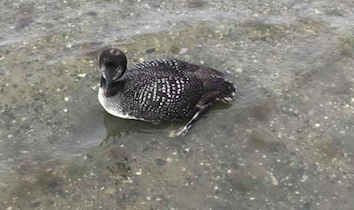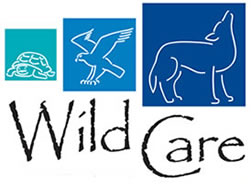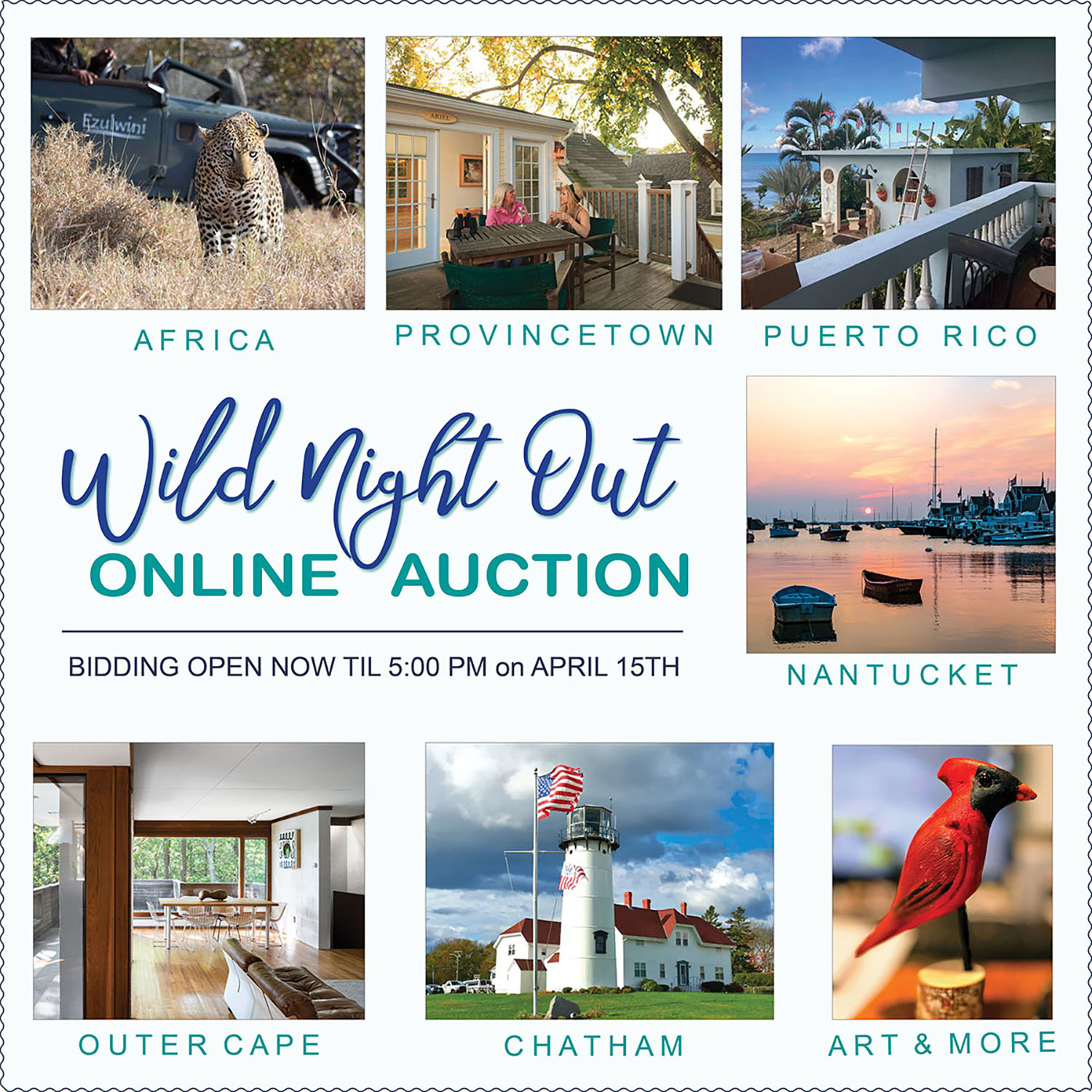
A “Loony” Adventure
A “Loony” Adventure
Adventures of a Volunteer • By Amy Sanders
August of 2020 was HOT—the hottest in 120 years of record keeping according to WBUR. I spent much of it in my studio. As you might remember from last month, I’ve been nursing a sore ankle bone (no clue as to why as is often the case as we age). Suffice it to say I’m not in the best shape I’ve ever been in when I get a call from Wild Care. There is a report of a badly injured gull on Ballston Beach (Ballston again too!). Could I possibly go?
There are no further details, except for the cell number of the caller. I call, no answer. Not surprising as Truro isn’t known for great cell reception. So I text the number—sometimes texts go through even in low reception areas. Its several minutes before I get a short reply. Yes, injured gull, to the left of the path.
Reluctantly I decide I can do this. A bit of exercise will probably be good. So I drive to Ballston, ask the lot attendants if they’ve heard anything and am greeted with blank stares. Ok, I park, hike over the dune path to the beach (just when did that dune path get so high??). I look to the left, and see absolutely no sign of a bird. For those of you who know the beach, it is easy to see a long way in both directions, and there aren’t a lot of people there to obscure the view. Hmm. I look right. Nothing. So I walk to the nearest group of folks sitting chatting with their sunhats. Not too close (Covid, right?), I ask, have they heard anything about an injured gull? Yes, they have, they say, but it was quite a while ago, and last they heard it was about a mile north, and nearly dead. Probably not alive anymore.
A mile?! That is most definitely NOT just to the left of the path! I ponder a bit, and decide if the bird is alive, its cruel to walk away, so I will give it my best shot.
Fortunately, it wasn’t a mile, but it was probably a half mile before I spotted anything resembling a bird. Its incredibly hot, but I’ve been able to walk at a leisurely pace, in and out of the water’s edge so I’m doing ok. I get a bit closer. And soon I realize I am looking at a bird with its head up (not so nearly dead as I’ve been led to believe). A few more steps and I realize I’m not looking at a gull either. I’m looking at a very alert loon—a Red-Throated Loon I think at first. A rich loon call followed, confirming I’m looking at a Common Loon, very much not in breeding plumage, or perhaps a juvenile.
Sometimes I wonder how many more times I’m going to fall for this. A gull reported as being in horrible shape turns out to be a loon, who isn’t in rough shape (or is), but can’t stand because loons can’t stand (their feet are too far back on their bodies to stand upright). I’ve been rescuing for several years now, and every single time I fall for these reports. You would think I would have completely learned my lesson when a penguin was reported once (it was a murre). I’m not very good at identifying birds but I’m certainly better than many caring callers. I should know by now, a reported bird is probably a bird (as opposed to say, a turtle), but there is no guarantee on what type of bird.
I might add here that I didn’t come well prepared. I have gloves, and a sheet to carry a near dead gull back to my car where the bin sits. I have no bin with me. Did I mention loons are large and strong?
I could hope that this loon is uninjured and just stranded but no. He’s close enough to water to drag himself back in and he’s clearly overheated. I can’t see any obvious injury but he makes no effort to move away from me.
He does, however, make a valiant effort to destroy my face and thereby keep his attacker at bay. I was successful at getting him in the sheet, and catching his beak in one hand. I lifted up his body and tucked it against my hip. I now faced a very hot ½ mile hike in sand, carrying a thrashing loon, using one hand to secure the body, and the other to secure that spear of a beak. And I’m not in great shape, with a sore ankle. But such are the adventures of a field rescuer.
Alas, I was able to get back to the car, so hot I thought I might expire myself, but more or less intact with a still thrashing young loon. I wrestled his fiery little body into the bin, removed the sheet (he was overheated too), and managed just in the nick of time to slap the cover on, duct tape it down and settle both of us into the delightful AC of the car. But this was by far the most physically difficult rescue I’ve done.
Several days later trailing Jen around with some odd question or another, I spotted this fellow taking a leisurely swim in the therapy pool. He greeted me with another throaty loon call. It isn’t known what was wrong but he was gaining strength and things were looking up for my wiggly pal.
And some significant exercise is on my September agenda!
______________
*Source: https://www.wbur.org/news/2018/09/06/august-heat-massachusetts
Wild Night Out Online Auction
READY, SET, BID… We are so excited to announce that our Wild Night Out Online Auction is now live!
READ ALL NEWS
CALENDAR OF EVENTS
04 April, 2024
Wild Night Out Online Auction
EVENT DETAILS
05 April, 2024
Wild Night Out
EVENT DETAILS
28 February, 2024
Wildlife Winter/Spring Talk Series
EVENT DETAILS

DID YOU KNOW??
Wild Care has a state-of-the-art seabird therapy pool, which allows seabirds and waterfowl to exercise on running water. This will help our bird friends recover more quickly so they can get back to their watery habitats!

